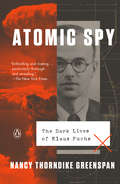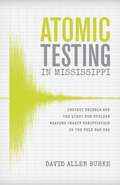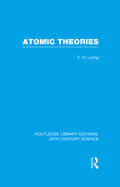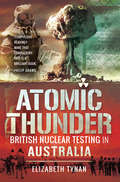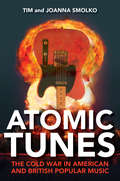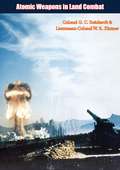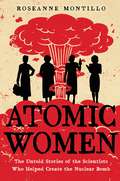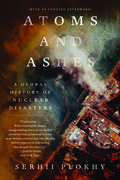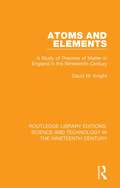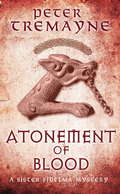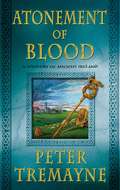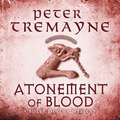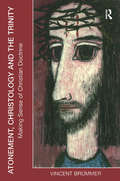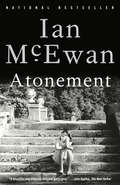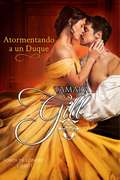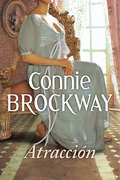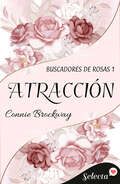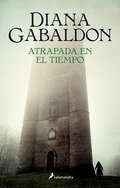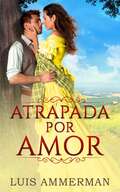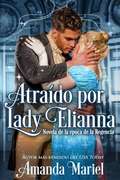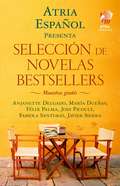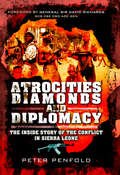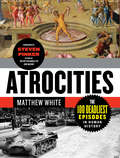- Table View
- List View
Atomic Spy: The Dark Lives of Klaus Fuchs
by Nancy Thorndike Greenspan"Nancy Greenspan dives into the mysteries of the Klaus Fuchs espionage case and emerges with a classic Cold War biography of intrigue and torn loyalties. Atomic Spy is a mesmerizing morality tale, told with fresh sources and empathy." --Kai Bird, author of The Good Spy and coauthor of American Prometheus: The Triumph and Tragedy of J. Robert OppenheimerThe gripping biography of a notorious Cold War villain--the German-born British scientist who handed the Soviets top-secret American plans for the plutonium bomb--showing a man torn between conventional loyalties and a sense of obligation to a greater good.German by birth, British by naturalization, Communist by conviction, Klaus Fuchs was a fearless Nazi resister, a brilliant scientist, and an infamous spy. He was convicted of espionage by Britain in 1950 for handing over the designs of the plutonium bomb to the Russians, and has gone down in history as one of the most dangerous agents in American and British history. He put an end to America's nuclear hegemony and single-handedly heated up the Cold War. But, was Klaus Fuchs really evil?Using archives long hidden in Germany as well as intimate family correspondence, Nancy Thorndike Greenspan brings into sharp focus the moral and political ambiguity of the times in which Fuchs lived and the ideals with which he struggled. As a university student in Germany, he stood up to Nazi terror without flinching, and joined the Communists largely because they were the only ones resisting the Nazis. After escaping to Britain in 1933, he was arrested as a German émigré--an "enemy alien"--in 1940 and sent to an internment camp in Canada. His mentor at university, renowned physicist Max Born, worked to facilitate his release. After years of struggle and ideological conflict, when Fuchs joined the atomic bomb project, his loyalties were firmly split. He started handing over top secret research to the Soviets in 1941, and continued for years from deep within the Manhattan Project at Los Alamos. Greenspan's insights into his motivations make us realize how he was driven not just by his Communist convictions but seemingly by a dedication to peace, seeking to level the playing field of the world powers.With thrilling detail from never-before-seen sources, Atomic Spy travels across the Germany of an ascendant Nazi party; the British university classroom of Max Born; a British internment camp in Canada; the secret laboratories of Los Alamos; and Eastern Germany at the height of the Cold War. Atomic Spy shows the real Klaus Fuchs--who he was, what he did, why he did it, and how he was caught. His extraordinary life is a cautionary tale about the ambiguity of morality and loyalty, as pertinent today as in the 1940s.
Atomic Testing in Mississippi: Project Dribble and the Quest for Nuclear Weapons Treaty Verification in the Cold War Era
by David Allen BurkeIn Atomic Testing in Mississippi, David Allen Burke illuminates the nearly forgotten history of America's only nuclear detonations east of the Mississippi River. The atomic tests, conducted in the mid-1960s nearly 3,000 feet below ground in Mississippi's Tatum Salt Dome, posed a potential risk for those living within 150 miles of the site, which included residents of Hattiesburg, Jackson, Gulfport, Biloxi, Mobile, and New Orleans. While the detonations provided the United States with verification methods that helped limit the world's nuclear arsenals, they sparked widespread public concern.In 1964 and 1966 the Atomic Energy Commission conducted experiments at the salt dome—code-named Dribble—surrounded by a greater population density than any other test site in the United States. Although the detonations were not weapons tests, they fostered a conflict between regional politicians interested in government-funded science projects and a population leery of nuclear testing near their homes. Even today, residents near the salt dome are still fearful of long-term negative health consequences.Despite its controversy, Project Dribble provided the technology needed to detect and assess the performance of distant underground atomic explosions and thus verify international weapons treaty compliance. This technology led to advanced seismological systems that now provide tsunami warnings and detect atomic activity in other nuclear nations, such as Pakistan and North Korea.
Atomic Theories (Routledge Library Editions: 20th Century Science)
by F.H. LoringSummarising the most novel facts and theories which were coming into prominence at the time, particularly those which had not yet been incorporated into standard textbooks, this important work was first published in 1921. The subjects treated cover a wide range of research that was being conducted into the atom, and include Quantum Theory, the Bohr Theory, the Sommerfield extension of Bohr’s work, the Octet Theory and Isotopes, as well as Ionisation Potentials and Solar Phenomena. Because much of the material of Atomic Theories lies on the boundary between experimentally verified fact and speculative theory, it indicates in a unique way how the future of physics was perceived at the time of writing. It thus throws into stark relief not only the immense advances made since the 1920s, but also, perhaps, highlights the importance of not rigidly adhering to a particular program of future discoveries.
Atomic Thunder: British Nuclear Testing in Australia
by Elizabeth TynanAn in-depth account of Great Britain&’s atomic testing efforts in South Australia in the 1950s and &’60s, and its effects. British nuclear testing took place at Maralinga, South Australia, between 1956 and 1963, after Australian Prime Minister Robert Menzies had handed over 3,200 square kilometres of open desert to the British Government, without informing his own people. The atomic weapons test series wreaked havoc on Indigenous communities and turned the land into a radioactive wasteland. How did it come to pass that a democracy such as Australia suddenly found itself hosting another country&’s nuclear program? And why has it continued to be shrouded in mystery, even decades after the atomic thunder clouds stopped rolling across the South Australian test site? In this meticulously researched and shocking work, journalist and academic Elizabeth Tynan reveals the truth of what really happened at Maralinga and the devastating consequences of what took place there, not to mention the mess that was left behind.Praise for Atomic Thunder &“Compulsive reading? Make that compulsory. This is a brilliant book.&” —Philip Adams
Atomic Tunes: The Cold War in American and British Popular Music
by Tim Smolko Joanna SmolkoWhat is the soundtrack for a nuclear war? During the Cold War, over 500 songs were written about nuclear weapons, fear of the Soviet Union, civil defense, bomb shelters, McCarthyism, uranium mining, the space race, espionage, the Berlin Wall, and glasnost. This music uncovers aspects of these world-changing events that documentaries and history books cannot. In Atomic Tunes, Tim and Joanna Smolko explore everything from the serious to the comical, the morbid to the crude, showing the widespread concern among musicians coping with the effect of communism on American society and the threat of a nuclear conflict of global proportions. Atomic Tunes presents a musical history of the Cold War, analyzing the songs that capture the fear of those who lived under the shadow of Stalin, Sputnik, mushroom clouds, and missiles.
Atomic Weapons in Land Combat
by Colonel G. C. Reinhardt Lieutenant-Colonel W. R. KintnerHow the atomic bomb could be developed as a deterrent to aggressors.“Let’s face it. Sooner or later someone would have to write a book on the battlefield employment of atomic weapons. Hiroshima upset the world’s military applecart. Professional soldiers returned from World War II or from Korea dare not rest on their laurels. The next war, if it comes, is going to be different—made so by the biggest “X” factor ever introduced into military calculations, the atomic bomb.Like the mythical god Janus, atomic power has many faces. The first one displayed was popularized “The Absolute Weapon.” Atomic bombs unlimited, so we were told, either made war unthinkable or provided cheap and foolproof security to their sole owner. Disturbingly, these and other popular thoughts concerning the atomic bomb didn’t ring true with the co-authors of this book.A series of Army assignments gave each of them opportunities to examine and study the many aspects of the atomic military problem. At the Industrial College and Georgetown University Graduate School, we pondered separately. Simultaneous assignment to The Department of Analysis and Research at the Army’s Command and Staff College brought us together. The problem we saw, as soldiers and students of war, was not whether the atomic bomb would destroy civilization, but rather how this weapon could be developed as a deterrent to aggressors, as a potent aid to a United States’ victory should war be forced upon us.” – From the Author’s Introduction
Atomic Women: The Untold Stories of the Scientists Who Helped Create the Nuclear Bomb
by Roseanne MontilloBomb meets Code Girls in this nonfiction narrative about the little-known female scientists who were critical to the invention of the atomic bomb during World War II.They were leaning over the edge of the unknown and afraid of what they would discover there: Meet the World War II female scientists who worked in the secret sites of the Manhattan Project. Recruited not only from labs and universities from across the United States but also from countries abroad, these scientists helped in -- and often initiated -- the development of the atomic bomb, taking starring roles in the Manhattan Project. In fact, their involvement was critical to its success, though many of them were not fully aware of the consequences.The atomic women include:Lise Meitner and Irène Joliot-Curie (daughter of Marie Curie), who led the groundwork for the Manhattan Project from Europe;Elizabeth Rona, the foremost expert in plutonium, who gave rise to the "Fat Man" and "Little Boy," the bombs dropped over Japan;Leona Woods, Elizabeth Graves, and Joan Hinton, who were inspired by European scientific ideals but carved their own paths.This book explores not just the critical steps toward the creation of a successful nuclear bomb, but also the moral implications of such an invention. p.p1 {margin: 0.0px 0.0px 0.0px 0.0px; font: 13.0px Times}
Atoms and Ashes: A Global History Of Nuclear Disasters
by Serhii PlokhyA chilling account of more than half a century of nuclear catastrophes, by the author of the “definitive” (Economist) Cold War history, Nuclear Folly. Almost 145,000 Americans fled their homes in and around Harrisburg, Pennsylvania, in late March 1979, hoping to save themselves from an invisible enemy: radiation. The reactor at the nearby Three Mile Island nuclear power plant had gone into partial meltdown, and scientists feared an explosion that could spread radiation throughout the eastern United States. Thankfully, the explosion never took place—but the accident left deep scars in the American psyche, all but ending the nation’s love affair with nuclear power. In Atoms and Ashes, Serhii Plokhy recounts the dramatic history of Three Mile Island and five more accidents that that have dogged the nuclear industry in its military and civil incarnations: the disastrous fallout caused by the testing of the hydrogen bomb in the Bikini Atoll in 1954; the Kyshtym nuclear disaster in the USSR, which polluted a good part of the Urals; the Windscale fire, the worst nuclear accident in the UK’s history; back to the USSR with Chernobyl, the result of a flawed reactor design leading to the exodus of 350,000 people; and, most recently, Fukushima in Japan, triggered by an earthquake and a tsunami, a disaster on a par with Chernobyl and whose clean-up will not take place in our lifetime. Through the stories of these six terrifying incidents, Plokhy explores the risks of nuclear power, both for military and peaceful purposes, while offering a vivid account of how individuals and governments make decisions under extraordinary circumstances. Today, there are 440 nuclear reactors operating throughout the world, with nuclear power providing 10 percent of global electricity. Yet as the world seeks to reduce carbon emissions to combat climate change, the question arises: Just how safe is nuclear energy?
Atoms and Elements: A Study of Theories of Matter in England in the Nineteenth Century (Routledge Library Editions: Science and Technology in the Nineteenth Century #4)
by David M. KnightFirst published in 1967. The impression is sometimes given that the Atomic Theory was revived in the early years of the nineteenth century by John Dalton, and that continuously from then on it has played a vital role in chemistry. The aim of this study is to revise this over-simplified picture. Atomic explanations seemed to chemists to go beyond the facts, to fail to lend themselves to mathematical expression, and to deny the ultimate simplicity and unity of all matter. Most, therefore, rejected them. Meanwhile, physicists were developing a whole range of atomic theories to explain the physical properties of bodies in terms of very simple atoms or particles. During the last thirty years of the century the position changed, as physicists and chemists came to agree on a common atomic theory. But the last prominent opponents of atomism were not converted until the early years of the twentieth century, by which time studies of radioactivity had made it clear that the billiard-ball Daltonian atom must, in any case, be abandoned.
Atonement of Blood (Sister Fidelma Mysteries Book 24): A dark and twisted Celtic mystery you won't be able to put down
by Peter TremayneSuper sleuth Sister Fidelma returns in the twenty-fourth historical mystery by Peter Tremayne, acclaimed author of THE SEVENTH TRUMPET, THE SUBTLE SERPENT and many more.PRAISE FOR THE SISTER FIDELMA SERIES: 'This is masterly storytelling from an author who breathes fascinating life into the world he is writing about' Belfast Telegraph, 'The Background detail is brilliantly defined... wonderfully evocative' The Times Winter, 670 AD. King Colgú has invited the leading nobles and chieftains of his kingdom to a feast day. The gathering is interrupted by a religieux claiming that he has an important message for the King. Suddenly, the man, shouting 'Remember Liamuin!' stabs King Colgú. The assassin is slain but Colgú is on the verge of death. Who is Liamuin? It is a female name? Who is behind the assassination attempt? Colgú's lawyer sister, Fidelma of Cashel, and her companion, Brother Eadulf are charged with solving the mystery. They must journey into the territory of their arch-enemies, the Uí Fidgente, uncover the evil secrets in the dark, brooding Abbey of Mungairit, and venture into the threatening mountain fastness ruled by a godless tyrant. Danger and violence are their constant companions until the final devastating revelation . . .What readers are saying about ATONEMENT OF BLOOD:'Lots of action and plenty of twists, turns and red-herrings''Beautifully written - beautifully realised scenesfrom a past that dare not be forgotten''Another excellent mystery with so much historical background and colour'
Atonement of Blood: A Mystery of Ancient Ireland (Sister Fidelma Mystery #24)
by Peter TremayneWinter, 670 AD. King Colgú has invited the leading nobles and chieftains of his kingdom to a feast day. Fidelma and her companion Eadulf are finally home for an extended stay, and have promised their son, Alchú, that they'll be able to spend some time together after months of being on the road, investigating crimes. Fidelma and Eadulf are enjoying the feast when it is interrupted by the entrance of a religieux, who claims he has an important message for the King. He approaches the throne and shouts 'Remember Liamuin!' and then stabs King Colgú. The assassin is slain, but does enough damage to take out Colgú's bodyguard, and to put the king himself on the verge of death As King Colgú lies in recovery, Fidelma, Eadulf, and bodyguard Gormán are tasked with discovering who is behind the assassination attempt, and who Liamuin is. They must journey into the territory of their arch-enemies, the Uí Fidgente, to uncover the secrets in the Abbey of Mungairit, and then venture into the threatening mountain territory ruled by a godless tyrant. Danger and violence are their constant companions until the final devastating revelation. Atonement of Blood is a mystery of Ancient Ireland from Peter Tremayne.
Atonement of Blood: A dark and twisted Celtic mystery you won't be able to put down (Sister Fidelma)
by Peter TremayneSuper sleuth Sister Fidelma returns in the twenty-fourth historical mystery by Peter Tremayne, acclaimed author of THE SEVENTH TRUMPET, THE SUBTLE SERPENT and many more.Winter, 670 AD. King Colgú has invited the leading nobles and chieftains of his kingdom to a feast day. The gathering is interrupted by a religieux claiming that he has an important message for the King. Suddenly, the man, shouting 'Remember Liamuin!' stabs King Colgú. The assassin is slain but Colgú is on the verge of death. Who is Liamuin? It is a female name? Who is behind the assassination attempt? Colgú's lawyer sister, Fidelma of Cashel, and her companion, Brother Eadulf are charged with solving the mystery. They must journey into the territory of their arch-enemies, the Uí Fidgente, uncover the evil secrets in the dark, brooding Abbey of Mungairit, and venture into the threatening mountain fastness ruled by a godless tyrant. Danger and violence are their constant companions until the final devastating revelation . . .(P) Soundings, 2013
Atonement of Blood: A dark and twisted Celtic mystery you won’t be able to put down (Sister Fidelma)
by Peter TremayneSuper sleuth Sister Fidelma returns in the twenty-fourth historical mystery by Peter Tremayne, acclaimed author of THE SEVENTH TRUMPET, THE SUBTLE SERPENT and many more.PRAISE FOR THE SISTER FIDELMA SERIES: 'This is masterly storytelling from an author who breathes fascinating life into the world he is writing about' Belfast Telegraph, 'The Background detail is brilliantly defined... wonderfully evocative' The Times Winter, 670 AD. King Colgú has invited the leading nobles and chieftains of his kingdom to a feast day. The gathering is interrupted by a religieux claiming that he has an important message for the King. Suddenly, the man, shouting 'Remember Liamuin!' stabs King Colgú. The assassin is slain but Colgú is on the verge of death. Who is Liamuin? It is a female name? Who is behind the assassination attempt? Colgú's lawyer sister, Fidelma of Cashel, and her companion, Brother Eadulf are charged with solving the mystery. They must journey into the territory of their arch-enemies, the Uí Fidgente, uncover the evil secrets in the dark, brooding Abbey of Mungairit, and venture into the threatening mountain fastness ruled by a godless tyrant. Danger and violence are their constant companions until the final devastating revelation . . .What readers are saying about ATONEMENT OF BLOOD:'Lots of action and plenty of twists, turns and red-herrings''Beautifully written - beautifully realised scenes from a past that dare not be forgotten''Another excellent mystery with so much historical background and colour'
Atonement, Christology and the Trinity: Making Sense of Christian Doctrine
by Vincent Br�mmerFor many believers today the doctrines of Atonement, Christology and the Trinity seem like puzzling constructions produced by academic theologians. They are cast in unintelligible forms of thought derived from Platonism or from feudal society, and for many their existential relevance for life today remains unclear. This book introduces these doctrines and proposes a reinterpretation in the light of the claim of many Christian mystics that ultimate happiness is to be found in enjoying the loving fellowship of God. This claim is amatrix of faith in terms of which these doctrines are shown to be relevant for the life of faith of believers today. Furthermore, since this matrix can be defended within all three Abrahamic traditions, Judaism, Christianity and Islam, the proposed understanding of these doctrines can also contribute usefully to the necessary dialogue between these traditions in a globalised world.
Atonement: A Novel (Everyman's Library Contemporary Classics Ser.)
by Ian McEwanNATIONAL BESTSELLER • A symphonic novel of love and war, childhood and class, guilt and forgiveness that provides all the satisfaction of a brilliant narrative and the provocation we have come to expect from the acclaimed Booker Prize–winning, internationally bestselling author.One of the New York Times&’s 100 Best Books of the 21st Century On a hot summer day in 1935, thirteen-year-old Briony Tallis witnesses a moment&’s flirtation between her older sister, Cecilia, and Robbie Turner, the son of a servant and Cecilia&’s childhood friend. But Briony&’s incomplete grasp of adult motives—together with her precocious literary gifts—brings about a crime that will change all their lives. As it follows that crime&’s repercussions through the chaos and carnage of World War II and into the close of the twentieth century, Atonement engages the reader on every conceivable level, with an ease and authority that mark it as a genuine masterpiece.
Atormentando a un Duque (Lords de Londres #1)
by Tamara GillDesde que su infiel esposo creara un escándalo muriendo en el lecho de su amante, Darcy de Merle está determinada a disfrutar de su viudez, y se niega a llorar a un hombre al que llegó a odiar. Encendiendo a la Alta Sociedad con su regreso, Darcy celebra un baile para volver a lanzarse a la Sociedad en el aniversario de la muerte de su marido. Cameron, el Duque de Athelby es un hombre que se atiene a las reglas. Siempre. Ha vivido a través de las consecuencias de lo que la rebeldía, el descuido y la falta de respeto por la posición social de uno mismo puede hacerle a una familia. Es por ello que cuando ve a Darcy de Merle bordeando los límites de la respetabilidad, sólo entiende correcto recordarle las etiquetas propias a las que debería adherirse. Darcy se niega a permitir que otro hombre le diga lo que debe hacer. Cuando el Duque de Athelby le reprende durante cada uno de sus encuentros, recordándole de sus fallas en las formas de alta sociedad, bueno… sólo hay una cosa que puede hacer al respecto: seducir al Duque y mostrarle que hay más en la vida que solo la propiedad de las convenciones dispuestas por su esfera. Una batalla de voluntades se lleva a cabo, donde todas las apuestas están hechas, numerosas reglas son rotas y el amor se convierte en la recompensa final.
Atracción (Buscadores de rosas #Volumen 1)
by Connie BrockwayNinguna mujer está a salvo si anda acompañada de un atractivo escocés de anchas espaldas y rudos modales... El primer volumen de la trilogía de los Buscadores de rosas. Desesperada por sacar a sus hermanas y a ella misma de la pobreza, Kate Nash Blackburn se embarca en un viaje por el norte de Escocia para conquistar a un acaudalado aristócrata y conseguir un matrimonio que les ofrezca protección. Pero los problemas no tardan en llegar cuando se adentra en una posada repleta de rufianes. Suerte que acude en su ayuda un bravo soldado escocés que pronto se ofrece a escoltarla hasta que llegue a su destino. Se trata de Kit MacNeill y tiene una promesa que cumplir. Kate desconfía enseguida de este hombre áspero y de rudos modales, pero pronto se siente hechizada por su profunda amabilidad y sus amplios conocimientos. Aun así no puede evitar preguntarse: ¿quién es este hombre misterioso y atormentado en cuyos brazos se siente renacer? Atracción es el primer volumen de la trilogía de los Buscadores de rosas. El segundo es Placer y el tercero Rendición.
Atracción (Buscadores de rosas #Volumen 1)
by Connie BrockwayNinguna mujer está a salvo si anda acompañada de un atractivo escocés de anchas espaldas y rudos modales... El primer volumen de la trilogía de los Buscadores de rosas. Desesperada por sacar a sus hermanas y a ella misma de la pobreza, Kate Nash Blackburn se embarca en un viaje por el norte de Escocia para conquistar a un acaudalado aristócrata y conseguir un matrimonio que les ofrezca protección. Pero los problemas no tardan en llegar cuando se adentra en una posada repleta de rufianes. Suerte que acude en su ayuda un bravo soldado escocés que pronto se ofrece a escoltarla hasta que llegue a su destino. Se trata de Kit MacNeill y tiene una promesa que cumplir. Kate desconfía enseguida de este hombre áspero y de rudos modales, pero pronto se siente hechizada por su profunda amabilidad y sus amplios conocimientos. Aun así no puede evitar preguntarse: ¿quién es este hombre misterioso y atormentado en cuyos brazos se siente renacer? Atracción es el primer volumen de la trilogía de los Buscadores de rosas. El segundo es Placer y el tercero Rendición.
Atrapada en el tiempo (Saga Outlander #Volumen 2)
by Diana GabaldonSegunda entrega de la exitosa saga de Diana Gabaldon «Outlander» en la que se basa la popular serie de televisión. Una historia de amor diferente, en la que los encuentros fortuitos y el juego equívoco del tiempo se conjugan en un intrigante final. Veinte años después de haber experimentado la más extraña aventura de su vida -un viaje a través del tiempo hasta la Escocia del siglo XVIII-, Claire Randall regresa con su hija Brianna a las imponentes y misteriosas montañas escocesas donde todo comenzó. Con la ayuda de Roger, un joven historiador, Claire se lanza a una obsesiva búsqueda de las tumbas de los caídos en la batalla de Culloden,librada en 1745. El paso del tiempo no ha podido borrar los intensos recuerdos de un amor difícil de explicar. Con el transcurrir de los días, Claire irá descubriendo, ante los ojos incrédulos de su hija y de Roger, el fascinante secreto cuya clave es el cauce interior que conduce al pasado. Reseñas:«Conmovedora, audaz, emocionante... Con gran maestría, Gabaldon entrelaza períodos históricos sin perder nunca el hilo argumental.»Locus «De cualidad superior, un talento que va más allá de una narración inteligente.»The Grand Prairie News
Atrapada por Amor
by Luis AmmermanUna malvada madrastra conspira para alejar a Almendra del amor de su vida en esta bella historia situada en la época de la Regencia al mejor estilo Cenicienta. Almendra es la hija de un barón, pero tras perder a sus padres, se ve obligada a vivir con su cruel madrastra. Sin un céntimo, Almendra pasa sus días trabajando de sirvienta en su propia casa, aunque se lo pasa soñando con encontrar un marido apuesto que la aleje de su miserable vida. El duque de Caldwell no está interesado en casarse con la primera mujer que se le presente. Quiere a alguien bella y única, alguien que encarne las virtudes de su difunta madre. Cuando su carruaje se estropea y una hermosa joven se detiene para ayudarlo, sabe que ha encontrado a la mujer perfecta para él. Pero cortejarla resultará ser todo un reto ya que la madrastra de Almendra conspirará contra ellos en todo momento. Justo cuando Almendra cree que finalmente va a encontrar la verdadera felicidad, un impactante giro en los acontecimientos hace que lo pierda todo. Aunque por amor siempre vale la pena luchar, ¿hasta dónde luchará Almendra antes de admitir su derrota?
Atraído por Lady Elianna
by Samantha Sugey Priego Morales Amanda MarielUna mujer lo ha perdido todo… Después de la muerte de su padre, Lady Elianna es forzada a trabajar como sirvienta de su primo y su familia. Durante años, ella ha hecho lo que se le ordena, fungiendo desde ser una acompañante a una sirvienta de cocina sin quejarse. Eso es hasta que Lord Sinclair se presenta en la propiedad causando que ella se atreva a soñar una vez más. Un hombre determinado a salvarla… Lord Sinclair se siente intrigado sobre Elianna después de un breve encuentro en Hyde Park. Él está convencido de que la mujer está escondiendo algo y está determinado a descubrir sus secretos. Cuando la persona a la que Lady Elianna acompaña, lo invita a una fiesta en su propiedad, él acepta. Circunstancias más allá de su control… La pasión se enciende en la vida de Elianna mientras ella lucha por mantener a salvo sus secretos mientras Lord Sinclair hace todo lo que está en su poder pare descubrirlos. Una fatídica noche lo cambiara todo, arrastrando sus secretos a la luz y forzando acciones. ¿Será posible que el amor sea la llave para triunfar sobre su pasado?
Atria Español: Muestra gratis
by Jodi Picoult Javier Sierra Anjanette Delgado Fabiola Santiago Maria Duenas Felix J PalmaA Simon & Schuster eBook. Simon & Schuster has a great book for every reader.
Atrocities, Diamonds and Diplomacy: The Inside Story Of The Confict In Sierra Leone
by Peter PenfoldIn early 1997, Peter Penfold arrived in Sierra Leone as the British High Commissioner. This fascinating book describes not only his eventful three year tour but the background and subsequent events that placed this small country at the center of the world stage.During his tour, he found himself as right hand man to the countrys beleaguered President Kabbah. Due to rebel actions, including shocking atrocities, the author had to not only evacuate the international community (twice) but was forced out himself. At times he flew in daily from British warships as the situation was dangerously unstable.We learn how almost immediately after being praised by Prime Minister Tony Blair for his pivotal role in getting the once rich country back on its feet, he found himself under Customs and Excise investigation and Parliamentary Committee scrutiny for his supposed role in the Arms for Africa Enquiry. While reprimanded by the FCO, he was feted and made a Paramount Chief by the Sierra Leone people.He describes how, after his tour was cut short despite his and the host Governments appeals, the situation again deteriorated. He gives a highly informed account of the subsequent events including the SAS Operation BARRAS the rescue of the British military hostages. This is a very important account based on the most privileged knowledge.
Atrocities: The 100 Deadliest Episodes in Human History
by Steven Pinker Matthew White"An amusing (really) account of the murderous ways of despots, slave traders, blundering royals, gladiators and assorted hordes."--New York Times Evangelists of human progress meet their opposite in Matthew White's epic examination of history's one hundred most violent events, or, in White's piquant phrasing, "the numbers that people want to argue about." Reaching back to the Second Persian War in 480 BCE and moving chronologically through history, White surrounds hard facts (time and place) and succinct takeaways (who usually gets the blame?) with lively military, social, and political histories.
Atrocities: The 100 Deadliest Episodes in Human History
by Matthew WhiteEvangelists of human progress meet their opposite in Matthew White's epic examination of history's one hundred most violent events, or, in White's piquant phrasing, "the numbers that people want to argue about. " Reaching back to the Second Persian War in 480 BCE and moving chronologically through history, White surrounds hard facts (time and place) and succinct takeaways (who usually gets the blame?) with lively military, social, and political histories.
